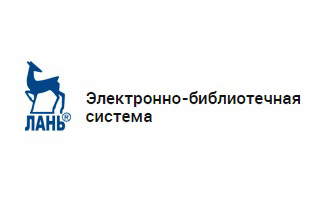 |
|
| ISSN 0536-1028 (Print) ISSN 2686-9853 (Online) |
Issue №8 - 2019
|
|
GEOTECHNOLOGY: UNDERGROUND, OPEN, CONSTRUCTIONAL | ||
| Zemskov A. N. Bekher A. V. |
The future of freight cable cars application in the conditions of the North |
5 | |
| Tsidaev B. S. | 14 | ||
| Bagazeev V. K. Boikov I. S. Valiev N. G. Zdorovets I. L. |
21 | ||
|
GEOMECHANICS. DESTRUCTION OF ROCKS |
|||
| Sosnovskaia E. L. Avdeev A. N. |
Forecasting potential rockburst hazard of Kholbinsky mine lower horizons |
30 | |
| Gladyr A. V. Sidliar A. V. Konstantinov A. V. Lomov M. A. |
Results comparison of Prognoz ADS system geophones testing in mining conditions |
38 | |
| Karablin M. M. Prostov S. M. Lesin Iu. V. |
47 | ||
|
MINING AND OIL-AND-GAS GEOLOGY, GEOPHYSICS |
|
||
| Borisov A. V. Vinogradov V. B. |
Electrodynamic model of a storage pond dam |
58 | |
| Guliaev A. N. Osipova A. Iu. |
68 | ||
|
MINERAL PROCESSING |
|||
| Stupakova E. V | 81 | ||
| Semenov A. N. Seryi R. S. |
Hard-to-wash sand disintegration investigation in gold placers |
88 | |
|
ECONOMICS AND MINING PRODUCTION CONTROL |
|
||
| Loginov V. G. Ignatieva M. N. Balashenko V. V |
97 | ||
| Naumov I. V. Krasnykh S. S. |
108 | ||
|
ГОРНАЯ МЕХАНИКА. ГОРНЫЕ МАШИНЫ И ТРАНСПОРТ |
|||
|
Shikhov A. M. |
Vibratory conveying equipment with steady elliptical oscillations |
125 | |
|
Kopytov A. I. |
133 |
Issue №1 - 2020
Modelling scraper conveyor operation in the turn zone
DOI: 10.21440/0536-1028-2019-6-108-117
Zhetesova G. S., Beisembaev K. M., Mendikenov K. K., Teliman I. V., Akizhanova Zh. T. Modelling scraper conveyor operation in the turn zone. Izvestiya vysshikh uchebnykh zavedenii. Gornyi zhurnal = News of the Higher Institutions. Mining Journal. 2019; 6: 108–117 (In Russ.). DOI: 10.21440/0536-1028-2019-6-108-117
Introduction. More complex mining and geological conditions of solid minerals extraction during
underground development result in the loss of work efficiency. The solution to the problems is in the
creation of shortwall extraction technologies based on the swivel scraper conveyor operation.
Research aim. Based on the analysis of the single-chain traction unit operation situated in the centre
of pans, research aims to provide steady movement of scrapers at ramp’s turn up to 90° in the bedding
plane, develop the constructive scheme of a conveyor which meets the accepted work technologies.
Methodology. System analysis of structures is carried out together with the traction unit movement study,
based on the simulation with the method of dynamic equations linearization in Adams, with the analysis
of data from swivel conveyor prototypes testing.
Results. The model and the movement mechanism of the tension unit with scrapers along the pin-connected
pans at an angle up to 15° have been worked out and substantiated; constructive schemes of units for
the turn zone have been identified, ensuring the stability of tension unit movement and the retention of the
transported material within the limits of the rod. It has made it possible to develop the specification
of requirement for the conveyor test model design, calculation and testing, and specify its scope.
Summary. The possibility of creating efficient models based on the linearization of dynamics equations in
Adams package taking into account oscillations within the system. Features of scrapers movement in the
turn zone and the mechanism of oscillations suppression by means of a “pair of forces” at the scraper
of a traction unit have been identified. The system is effective under the angle of the turn up to 15ο for each
pan. Constructive schemes have been identified for a swivel scraper conveyor that ensure the steady
movement of scrapers and overlap the gaps at the turns of the sections, with an elastic segmental reflector.
Key words: modeling; scraper conveyor; turn zone; linearization of dynamics equations.
Acknowledgements: Research has been carries out on AR05134441 “Development, production and trial run of
a new conveyor turn block design with the turn at a corner up to 90 degrees in the mine ground plane for longface
systems and curved mines.” We thank D. E. Orazbekov for taking part in writing the present research.
REFERENCES
1. Zhetesova G. S., Beisembaev K. M., Malybaev N. S. Development of the basic technology of mining
production with 90° conveyor swing. Izvestiia Tomskogo politekhnicheskogo universiteta. Inzhiniring
georesursov = Bulletin of the Tomsk Polytechnic University. Geo Assets Engineering. 2018; 8: 37–49. (In Russ.)
2. Beisembaev K. M., Alpysov M. S., Demin V. F., Zhetesov S. S., Kurmanov S. T., Malybaev N. S.,
Mendikenov K. K., Shmanov M. N. Swivel scraper conveyor. Eurasian Patent no. 024900; 2016.
3. Marian Dolipski, Eryk Remiorz, Piotr Sobota. Dynamics of non-uniformiti loads of AFC drives. Arch.
Min. Sci. 2014; 59 (1): 155–168.
4. Osichev A. V., Tkachenko A. A. Estimating the effect of drive sprocket on the dynamic forces in the
working body of a flight conveyor SP72. Visnik KDPU imeni Mikhaila Ostrogradskogo = Transactions of
Kremenchuk Mykhailo Ostrogradskyi National University. 2009; 4 (57; 1): 10–13. (In Russ.)
5. Marian Dolipski, Eryk Remiorz, Piotr Sobota. Determination of dynamic loads of sposket drum teeth
and seats bu means of of a mathematical mode of the longwall conveyor. Arch. Min. Sci. 2012;
57 (4): 1101–1119.
6. Chuguev L. I. The dynamics of the conveyors with chain drive unit. Moscow: Nedra Publishing; 1976.
(In Russ.)
7. Kondrakhin V. P., Zubova Iu. A., Tkachenko E. L. Multicriteria approach to the justification of the start
sequence for the armoured face conveyor with two speed motors. Available from: http://masters.donntu.org/2014/fimm/zubova/library/VAK%201.htm [Accessed 16 March 2019]. (In Russ.)
8. Zhetesova G. S., Beisembayev K. M., Mendikenov K. K., Malybayev N. S., Madikhanova A. B. Features
of designing conveyor scrapers and chain turn zone during vibration. European Journal of Natural History.
2017; 5: 61–66.
9. Soleiman Nouri F., Haddad Zarif M., Fateh M. M. Designing an adaptive fuzzy control for robot
manipulators using PSO. Journal of AI and Data Mining. 2014; 2 (2): 125–133.
10. Talli A. L., Kotturshettar B. B. Forward kinematic analysis, simulation &workspace tracing of
anthropomorphic robot manipulator by using MSC. ADAMS. 2015; 4 (1): 18462–18468.
11. Ashok K. J., Partha P. R. Modeling and simulation of SCORA-ER14 robot in ADAMS platform.
International Jornal of Engineering and Technical Research. 2014; 2 (July): 105–109.
12. Dodagoudar G. R., Rao B. N. & Sunitha N. V. A mesh free method for beams on elastic foundation.
International Journal of Geotechnical Engineering. 2015; 9 (5): 298–306.
Received 28 March 2019
Determination of steel wire rope parameters affecting the safety of operation
DOI: 10.21440/0536-1028-2019-6-118-123
Poliakov S. V. Determination of steel wire rope parameters affecting the safety of operation.
Izvestiya vysshikh uchebnykh zavedenii. Gornyi zhurnal = News of the Higher Institutions. Mining Journal. 2019; 6: 118–123 (In Russ.). DOI: 10.21440/0536-1028-2019-6-118-123
Introduction. Winding wire rope, being a flexible element capable of carrying high tensile load, is widely
used in modern hoisting equipment. Now it is hard to imagine the majority of important sectors of economy
without the well-used hoisting wire ropes. This primarily applies to construction and mining where wire
rope is widely used in hoisting equipment.
Research aim. Based on scientific discoveries in mine wire ropes design made by the Russian scientists,
the present research aims to determine the main parameters affecting mine wire rope safe operation.
Methodology. Hoisting wire ropes in service, operating in the conditions of free suspension, are subject to
significant unwinding in tension in deep hoisting shafts, as a result, spiral elements lay angles of wire rope
change and cause a geometrically nonlinear nature of strains. Calculating the radius and angle of waviness
using an inflexible calculation model results in low accuracy. The present research determines the
parameters affecting wire rope safe operation; nonlinear theory of wire ropes calculation has been applied
making it possible to improve the reliability and durability of the mine wire rope.
Results. The present article defines and provides support for the parameter affecting the safe operation of
mine hoisting wire ropes. The equation of the radius of waviness is derived through nonlinear dependences.
The quantitative value of the permissible radius of waviness is specified.
Summary. The obtained formulae allow to determine the permissible value of the radius of waviness
wherein future safe operation of mine wire rope is possible. Due to the formulae which determine the
permissible value of the radius of waviness, the recommendations given in this article will improve
the security of steel mine wire rope operation.
Key words: wire rope; strains; permissible value; waviness, lay angle; theory of wire rope.
REFERENCES
1. Stiepanov A., Koskin A. A few words more on the properties of viscoelastic winding ropes. In: Mine
hoisting '96. Vol. 2: International Scientific and Technical Conference; 8–10 October 1996, Gliwice,
Poland. p. 65–68.
2. Nemtsov M. V., Trifanov G. D. A magnetic method of wire-rupture detection in steel cables. Russian
Electrical Engineering. 2017; 88 (5): 285–288.
3. Chayun I. M., Nepomnyashchyi A. V. Tension optimization of the conductor-and-support cable elements
during stranding process. Odeskyi Politechnichnyi Universytet. Pratsi. 2016; 3 (50): 21–28.
4. Khalfin M. N. Mine hoisting wire rope calculation with the account of unequal physical-mechanical
properties of its spiral elements. In: Heading and winning machines and tools. Novocherkassk; 1988.
p. 122–126. (In Russ.)
5. Khalfin M. N. Steel wire ropes calculation for the purpose of distinguishing between geometric
parameters and mechanical properties of wires. Izvestiia vuzov Severo-Kavkazskogo regiona. Tekhnicheskie
nauki = University New. North-Caucasian Region. Technical Sciences Series. 2005; special edition: 5–13.
(In Russ.)
6. Lepekha O. G. Increasing the residual life of hoisting cables by improving the methods of their deflected
mode calculation. Vestnik Kharkovskogo natsionalnogo avtomobilno-dorozhnogo universiteta = Bulletin
of Kharkiv National Automobile and Highway University: collection of scientific works. Kharkiv:
KhNADU Publishing; 2012; 57: 289–291.
7. Glushko M. F. Steel hoisting wire ropes. Kiiv: Tekhnika Publishing; 1966. (In Russ.)
8. Glushko M. F., Malinovskii V. A., Shigarina L. I., Kanonenko L. A. Nonlinear equilibrium equations for
straight wire strand. Prikladnaia mekhanika = International Applied Mechanics. 1979; 12: 127–129.
(In Russ.)
9. Khalfin M. N., Isakov V. S. Nonlinear static equations for crane cable taking into account the differences
between the geometric parameters and mechanical properties of wires. In: Proceedings of the1st National
Conference for Professors, Lecturers, and Scientific Researchers. Platov South Russian State Polytechnic
University (NPI). Novocherkassk; 2015. p. 143–145. (In Russ.)
10. Poliakov S. V. Nonlinear static equations for double lay wire rope with the account of waviness.
In: New technologies in technical units motion control: Proceedings of the 8th Science and Technology
Conference, Novocherkassk, 14 December 2005. Rostov-on-Don: SKNTs VSh Publishing; 2006; 6.
p. 83–88. (In Russ.)
11. Poliakov S. V. Nonlinear static equation for a spiral wire rope with the account of waviness. In: New
technologies in technical units motion control: Proceedings of the 8th Science and Technology Conference,
Novocherkassk, 14 December 2005. Rostov-on-Don: SKNTs VSh Publishing; 2006; 6. p. 88–91. (In Russ.)
12. Osipova T. N., Nesterov A. P. Reducing the dynamic load in ropes of drum hoists. Vostochno-Evropeiskii
zhurnal peredovykh tekhnologii = Eastern-European Journal of Enterprise Technologies. 2014;
2 (7; 68): 17–22. (In Russ.)
13. Koshkin A. P., Trifanov G. D. Wire ropes for hoisters. Perm: PNPRU Publishing; 2014. (In Russ.)
14. Michel Hamelin, Frank Kitzinger. Apparatus for increasing linear resolution of electromagnetic wire
rope testing. United States Patent, no. 5565771; 1996. Available from: https://www.google.com/patents/
US5565771 [Accessed 20 October 2016].
Received 8 April 2019
Economic evaluation of environmental implications in subsoil use
DOI: 10.21440/0536-1028-2019-6-98-107
Ivanov A. N., Logvinenko O. A., Ignatieva M. N. Economic evaluation of environmental implications in subsoil use. Izvestiya vysshikh uchebnykh zavedenii. Gornyi zhurnal = News of the Higher Institutions. Mining Journal. 2019; 6: 98–107 (In Russ.). DOI: 10.21440/0536-1028-2019-6-98-107
Relevance. Due to the deteriorating environmental situation, the significance of ecological factor increases
when substantiating the variants of nature management and subsoil use; it requires further evaluation
of economic damage caused by both of them. The evaluation of the economic damage caused by the human
impact on the environment is based on the economic evaluation of natural resources state during the
formation of environmental implications. The relevance of the research on the natural resources and
ecosystem services economic evaluation procedure improvement is proven as a matter of the national
natural capital importance.
Research aim is to improve cost estimation tools for natural resources and ecosystem services.
Methodology includes generalization and analysis of the notions of eecosystem services and their
classification.
Research results. The preservation of natural capital, when implementing weak sustainability concept,
means that the used natural capital is replaced by the physical one (man-made); in case of strong
sustainability concept implementation, minimum substitution is allowed for. These conditions require
wider economic methods of governmental control in natural management, such as a wider use of economic
evaluation and economic damage. It is necessary to specify the structure of natural capital and draw up
the scheme of natural resources (natural assets) utilization in order to improve the procedure of evaluation.
The present research schematically outlines the procedure of environmental products and services flow
formation, which characterize the utilization of natural assets, i.e. natural resources and ecosystem
services. Definitions of ecosystem services have been analysed, and their difference from ecosystem
functions has been proven as soon as economic evaluation of ecosystem services requires their accurate
definition. Particular classifications of ecosystem services have been generalized and analysed.
The reasonability has been proven to single out a resource function along with ecosystem functions taking
into account that it is often associated with abiotic elements of ecosystems. An author’s variant of ecosystem
services list is proposed, which excludes provisioning services as they are ascribed to the category of
resource services. As far as the regulating services are concerned, the following types are distinguished:
flows regulation, physical environment regulation, and biotic environment regulation. Supporting services
are ascribed to a separate category which is not subject to further economic evaluation. Cultural services
include: spiritual, scientific and educational, and therapeutic. Economic evaluation methods covers both
traditional practical methods applied in nature management and new methods which are often associated
with sociological surveys and questionnaires. Basic conditions for economic evaluation have been
formulated.
Key words: natural capital; natural resources; ecosystem services; functions; classifications; economic
evaluation; methods.
REFERENCES
1. Logvinenko O. A., Strovskii V. E. Natural resources considered as a part of the national wealth. Izvestiya
Uralskogo Gosudarstvennogo Gornogo Universiteta = News of the Ural State Mining University. 2019;
2: 126–133. (In Russ.)
2. Yu H., Wang Y., Li X., Sun M., Du A. Measuring ecological capital: State of the art, trends, and
challenges. Journal of Cleaner Production. 2019; 219: 833–845. DOI.org/10.1016/j.ecoser.2019.100927
3. Costanza R., Daly H. Natural capital and sustainable development. Conservation Biology.
1992; 6: 37–46.
4. Glazyrina I. P. Natural capital in the economics of transition. Moscow: NIA-Priroda, REFIA Publishing;
2001. (In Russ.)
5. Pearce David. Economics, equity and sustainable development. Futures. 1988; 20(6): 598–605.
6. Levallois Clement. Can de-grow be considered a policy option? A historical note on Nicholas Georgescu-
Roegen and the club of Rome. Ecological Economics. 2010; 69(11); 2271–2278.
7. Pakhomova N. V., Rikhter K. K. Economics of nature management and ecological management. St.
Petersburg: SPBGU Publishing; 1999. (In Russ.)
8. Droste N., Bartkowski B. Ecosystem Service valuation for national accounting: a reply to obst, hein and
edens. Environmental and Resource Economics. 2018; 71 (1): 205–215. DOI.org/10.1007/s10640-017-0146-3
9. Tishkov A. A. (ed.) Economics of biodiversity conservation: reference book. Moscow: Institute of
Natural Resource Economics and Environmental Policy Publishing; 2002. (In Russ.)
10. Project “Economics of Ecosystems and Biodiversity”. The recognition of environmental economics.
The synthesis of TEEB approaches, conclusions and recommendations. Moscow; 2010. (In Russ.)
11. Fomenko G. A., Fomenko M. A., Loshadkin K. A., Mikhailova A. V. Cost estimation of natural
resources, facilities and ecosystem services in biodiversity conservation control: regional research
experience. Yaroslavl: Kadastr Publishing; 2002. (In Russ.)
12. Ecosystem services in Russia. Vol. 1. The services of terrestrial ecosystems. National report analogue.
Moscow; 2015. (In Russ.)
13. Strovskii V. E., Komarova O. G., Logvinenko O. A. Special characteristics of sustainable development
models. Izvestiya vysshikh uchebnykh zavedenii. Gornyi zhurnal = News of the Higher Institutions.
Mining Journal. 2019; 4: 89–97. DOI: 10.21440/0536-1028-2019-4-89-97.
14. Ruijs A., van Egmond P. Natural capital in practice. Ecosystem Services. 2017; 25: 106–116.
DOI: doi.org/10.1016/j.ecoser.2017.03.025
15. Ignatieva M. N. The formation of the territorial natural potential. Izvestiya Uralskogo Gosudarstvennogo
Gornogo Universiteta = News of the Ural State Mining University. 2014; 4: 51–56. (In Russ.)
16. Alkamo D. et al. Ecosystems and well-being: a framework for assessment. Millennium Ecosystem
Assessment. Washington. Covelo. London: Island Press, 2005. 268 p.
17. Economics of ecosystems and biodiversity: potential and prospects of Northern Eurasia counties.
Project ТЕЕВ – Economics of Ecosystems and Biodiversity: the prospects for Russia and CIS countries
participation: conference proceedings. Moscow: Tsentr okhrany dikoi prirody Publishing; 2010. (In Russ.)
18. R. Costanza, R. d’Arge, R. de Groot, S. Farberk, M. Grasso, B. Hannon, K. Limburg, S. Naeem,
R. V. O’Neill, J. Paruelo, Paul Sutton and M. von Belt. The value of the world’s ecosystem services and
natural capital. Nature. 1997; 387(6630): 253–260.
19. Larkova M. S. Improving the methods of economic evaluation for ecosystem services: PhD (Economics)
Dissertation. Moscow: 2015. (In Russ.)
20. Litvinova A. A., Ignatieva M. N., Koroteev G. D. Identification of the services provided by specially
protected natural reservations. Uspekhi sovremennogo estestvoznaniia = Advances in Current Natural
Sciences. 2016; 6: 164–168. (In Russ.)
21. Kunitsyn L. F., Mukhina L. I. Some general issues of technology evaluation for natural complexes at
land development. Izvestiia AN SSSR = Proceedings of AS USSR. Ser. Geography. 1969; 1: 38–49.
(In Russ.)
22. Girusov E. V. (ed.) Ecology and economics of natural management. Moscow: IuNITI-DANA
Publishing; 2007. (In Russ.)
23. Dvoretskii L. M. Analysis of natural resources economic evaluation methods by the example of urban
land evaluation. Ekonomika prirodopolzovaniia = Environmental Economics. 2004; 4: 84–94.
(In Russ.)
24. Balashenko V. V., Ignatieva M. N., Loginov V. G. Natural resources potential of northern regions:
consistent features of comprehensive assessment. Ekonomika regiona = Economy of Region. 2015;
4: 84–94. (In Russ.)
25. Bobylev S. N., Tishkov A. A. (eds.) Economic evaluation of biodiversity. Moscow: 1999. (In Russ.)
26. Medvedeva O. E. Economic evaluation of biodiversity. Theory and practice of evaluation. Moscow:
Dialog-MSU Publishing; 1998. (In Russ.)
27. Perelet R. A. Testing international approaches to natural resources cost estimation. In: Towards the
sustainable development of Russia. Moscow: 1997; 2(6): 20–22. (In Russ.)
28. Teoh S. H. S., Symes W. S., Sun H., Pienkowski T., Carrasco L. R. A global meta-analysis of the
economic values of provisioning and cultural ecosystem services. Science of the Total Environment. 2019;
649: 1293–1298. DOI.org/10.1016/j.scitotenv.2018.08.422
29. Sutton P. C., Duncan S. L., Anderson S. J. Valuing our national parks: an ecological economics
perspective. Land. 2019; 8(4): 54. DOI.org/10.3390/land8040054
Received 17 June 2019

This work is licensed under a Creative Commons Attribution 4.0 International License.








